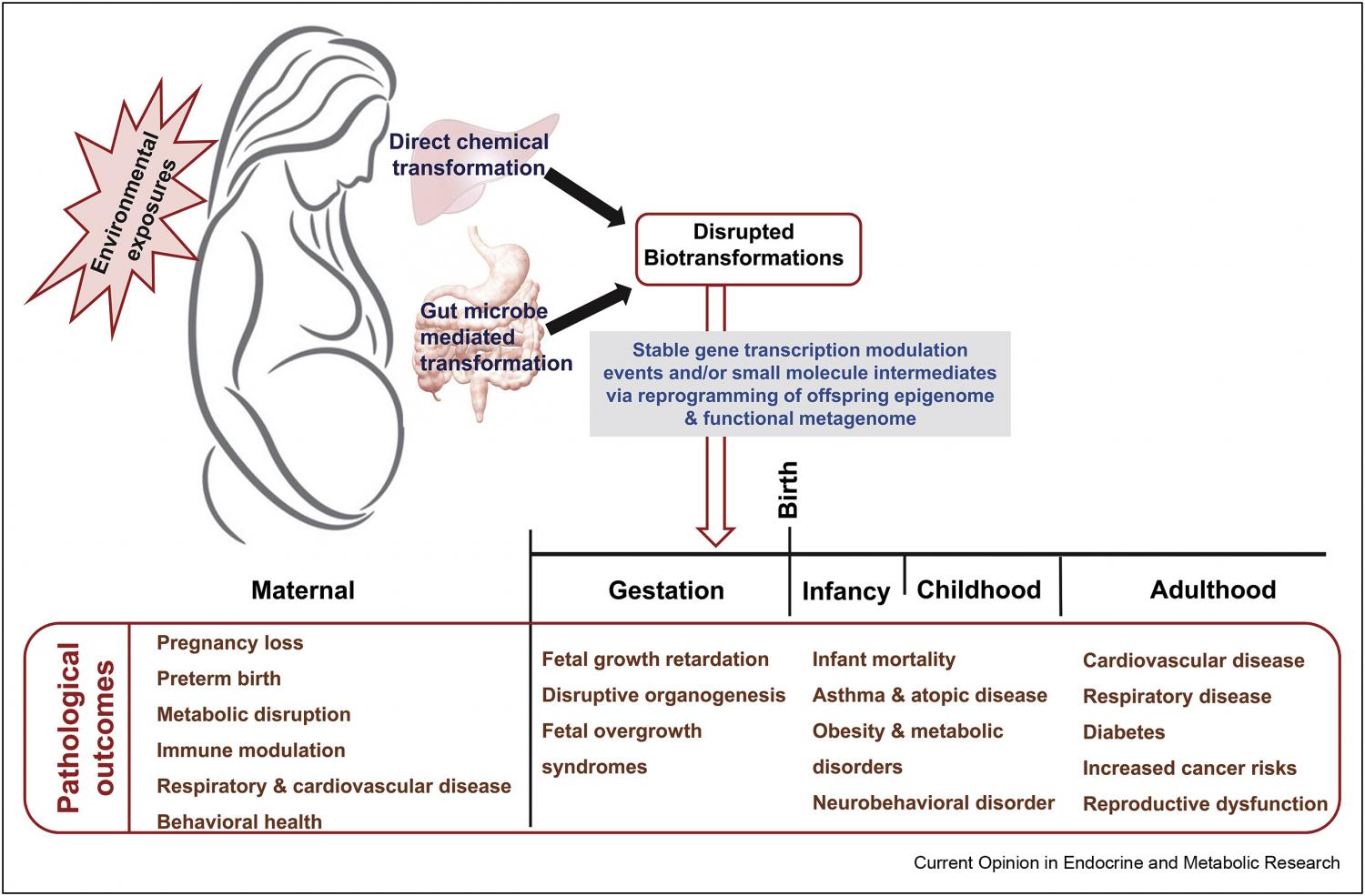
Unveiling the Interactions between Environmental Exposures and Microbiome: Implications for Fetal Programming and Sustainable Development Goals
In the realm of human health and development, the concept of 'fetal programming' has emerged as a critical area of study. This term refers to the way in which conditions during early development, specifically in the womb, can significantly impact an individual's health and wellbeing later in life. This article explores the complex dynamics of fetal programming and its implications for Sustainable Development Goals (SDGs) – a blueprint set by the United Nations to ensure a sustainable and healthy future for all.
Understanding Fetal Programming
Fetal programming is the biological process by which the in utero environment affects an offspring's development and future health. The fetus's environment can have lasting effects, influencing the individual's susceptibility to various diseases and health conditions throughout their life. This concept, also known as the Developmental Origins of Health and Disease (DOHaD), is a pivotal research area in understanding the impact of environmental exposures on the early development of humans.
The Role of Environmental Exposures
Environmental exposures in the womb, ranging from the mother's nutrition and stress levels to exposure to toxins, can impact fetal programming. These elements can trigger a chain reaction, leading to structural and functional changes in the developing fetus, which might manifest as health problems later in life. For instance, maternal malnutrition can lead to lower birth weights, which in turn increases the risk of cardiovascular diseases in adulthood.
The Microbiome Connection
The human microbiome, an ecosystem of trillions of microbes living in and on our bodies, plays a fundamental role in our health. Recent research suggests that the microbiome may also influence fetal programming. During pregnancy, maternal microbial communities can be transferred to the offspring, potentially shaping their future health. However, if the mother's microbiome is imbalanced due to factors like disease or antibiotic use, this may negatively impact the offspring's health, marking a vital aspect of fetal programming.
Implications for Sustainable Development Goals (SDGs)
Understanding fetal programming's nuances can significantly impact several Sustainable Development Goals (SDGs), including Good Health and Wellbeing (SDG 3), Zero Hunger (SDG 2), and Clean Water and Sanitation (SDG 6).
SDG 3: Good Health and Wellbeing - Fetal programming research can provide crucial insights into preventing diseases, as many health conditions have their roots in early development. By understanding these origins, we can potentially develop early-life interventions that promote lifelong health.
SDG 2: Zero Hunger - Maternal nutrition has a direct impact on fetal development. Tackling malnutrition can improve fetal health, reduce the risk of developmental disorders, and ensure healthy growth, thereby contributing to SDG 2.
SDG 6: Clean Water and Sanitation - Reducing exposure to environmental pollutants by providing clean water and improved sanitation can help reduce the risk of adverse pregnancy outcomes linked to fetal programming.
The Role of SDG Resources in Fetal Programming Research
The SDG Resources portal is an invaluable tool in the quest to understand the intricacies of fetal programming. It serves as a comprehensive collection of research articles, reports, and data related to the SDGs, providing a platform for researchers, policymakers, and practitioners to explore the connections between early-life conditions and long-term health.
By harnessing the wealth of information available through the SDG Resources portal, we can delve deeper into the realm of fetal programming and its implications for sustainable development. This could lead to the creation of evidence-based policies and interventions that consider the early-life origins of health and disease, thereby contributing towards the achievement of the SDGs.
Future Directions and Conclusions
The study of fetal programming is a rapidly developing field. With increasing knowledge about the microbiome and its relationship with environmental exposures, we can anticipate a deeper understanding of how these factors interact and influence long-term health.
Future research should focus on defining these interactions more precisely. This includes studying the ways environmental factors influence the maternal and fetal microbiome, and how this, in turn, affects fetal programming. Additionally, understanding how to manipulate these factors to optimise health outcomes will be a significant step forward.
There is also a need for more interdisciplinary research involving obstetricians, microbiologists, neonatologists, epidemiologists and public health experts. Such a holistic approach could yield comprehensive insights into fetal programming and its broader implications.
Ultimately, recognising the potential of fetal programming research is crucial for the attainment of the SDGs. By promoting health from the earliest stages of life, we can work towards creating a sustainable and healthy future for all.
The complex dynamics of fetal programming offer an essential lens through which to view and approach the Sustainable Development Goals. By comprehending the profound effects of early-life conditions on long-term health, we can make strides towards achieving the SDGs. The SDG Resources portal by RELX plays an instrumental role in this process, providing a platform for synthesising research, sparking dialogue, and driving policy changes in this crucial field. Together, we can utilise the insights from fetal programming research to shape a healthier, more sustainable future.
